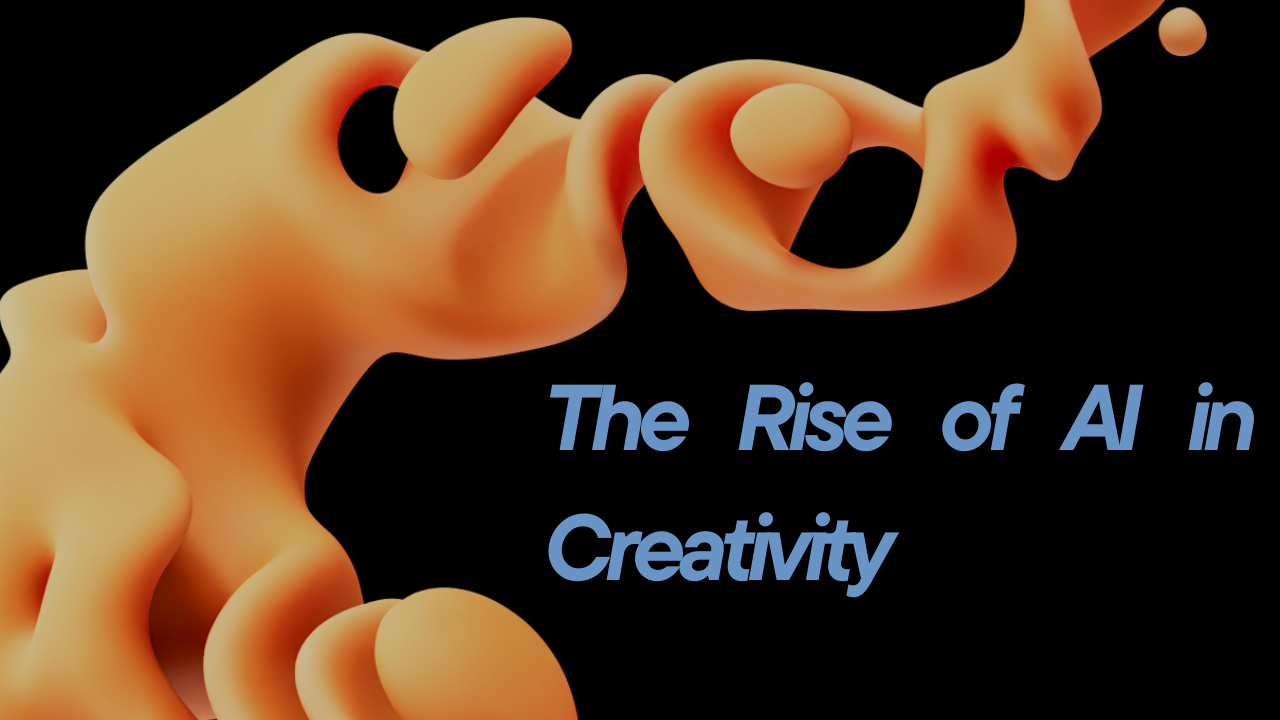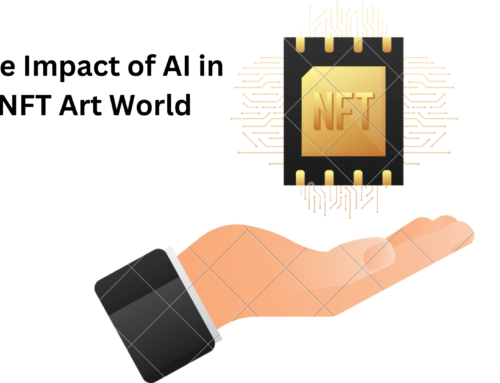Art has always been a mirror reflecting the essence of human creativity. But now, there’s a new artist in town – Artificial Intelligence (AI). Imagine machines creating masterpieces, blurring the lines between what’s human-made and what’s machine-made. Sounds intriguing, right? Well, let’s dive into the captivating world where AI art intersects with emerging technologies, exploring the fascinating intersection of AI Art and Technology.
In recent years, AI has revolutionized various industries, and art is no exception, particularly at the intersection of AI Art and Technology. With the advent of neural networks and deep learning algorithms, AI has gained the ability to generate artworks that can rival those created by human artists. But what makes AI art so fascinating is its fusion with emerging technologies, propelling creativity to new heights.

A New Era of Artistic Expression and Visual Art
In today’s digital age, the art world is experiencing an exciting shift – moving from traditional paintbrushes to innovative pixels on screens. This transition marks the beginning of a new era in artistic expression, where the intersection of AI art and technology is being explored in unique ways. With the rise of artificial intelligence (AI), artists are diving deep into the creative process, using AI-generated algorithms to expand the horizons of human creativity.
Exploring the intersection of art and technology presents artists with endless possibilities. By tapping into the power of AI, they can create artworks that were once unimaginable. These generative algorithms analyze vast datasets, opening up new avenues for artistic inspiration that go beyond human limitations. Through the utilization of AI, artists can experiment with novel forms, styles, and techniques, pushing the boundaries of traditional artistry.
As we venture further into the realm of AI-generated art, questions about the role of technology in the creative process emerge. While some may worry that AI could replace human creativity, others view it as a tool to enrich and complement artistic expression. By delving into the intersection of art and technology, we not only redefine the creative process but also challenge our understanding of what art can represent in the contemporary world.
How the Intersection of AI And Art Reflects Our Digital Age
In today’s world, where smartphones are like an extra limb and the internet is our playground, it’s no surprise that even art is taking a digital turn. You see, AI isn’t just a fancy term anymore; it’s become a tool for artists to explore new horizons, especially at the intersection of AI Art and Technology. Think about it – our traditional ways of making art, like painting and sculpting, are now blending with the realm of AI. These AI-powered art projects aren’t just about pretty pictures; they’re a mirror to society, reflecting our digital age.
Imagine artists collaborating with AI algorithms to create something beautiful. It’s like a dance between human creativity and machine precision. And what’s fascinating is how these AI-generated artworks challenge our traditional notions of what art should be. Who says a painting has to be done by hand to be appreciated? AI is showing us new avenues of creative expression that we never thought possible.
But hold on, does this mean AI is replacing traditional art? Not quite. Instead, it’s adding another layer to the canvas, especially at the intersection of AI Art and Technology. It’s opening up new possibilities for artists and designers to explore. And let’s not forget, at the heart of it all, is the human touch. We’re the ones defining art, using AI as a tool to push boundaries and spark new conversations at the intersection between art and technology. So next time you see an artwork generated by AI, take a moment to appreciate the blend of traditional and futuristic, and the endless possibilities it brings to the world of arts and design.
AI’s Impact on 3D Design and Virtual Reality
In today’s world, where technology keeps evolving faster than we can keep up, the impact of AI on 3D design and virtual reality is profound. Imagine this: AI algorithms diving deep into the world of art and artificial intelligence, creating a bridge between creativity and technology. This intersection of art and artificial intelligence isn’t just a futuristic dream anymore; it’s our reality.
With the advent of generative AI, the boundaries of art and AI are blurring. Artists are harnessing the power of AI to push the boundaries of visual art, exploring new frontiers in creativity and technology. AI-generated art is not just about mimicking human creativity but also about inspiring new forms of expression. In the realm of 3D design and virtual reality, AI algorithms are revolutionizing the way we create and interact with digital worlds.
From abstract art to immersive virtual experiences, AI is redefining the possibilities of artistic expression. The synergy between AI and art is transforming the landscape of creative industries, opening doors to new possibilities and pushing the boundaries of what we thought was possible. As we delve deeper into the intersection of AI art and technology, the future of creativity knows no bounds.
The Intersection of AI Art and Technology VR Experiences
Imagine AI collaborating with Virtual Reality (VR) and Augmented Reality (AR) technologies to produce immersive art experiences, especially at the intersection of AI Art and Technology. From interactive installations to digital galleries, the possibilities are endless. As technology advances, so does the canvas for AI artists, offering a playground where imagination knows no bounds.
Let’s hear what Banish Angural, The Owner & CEO of Banish Media, has to say “The combination of AI art generation with other advanced AI tools, such as text-to-speech and music generation, has immense potential in creating captivating and dynamic digital experiences. By harnessing the power of AI algorithms, art pieces can be instantly created and adapted in real-time, incorporating elements such as speech and music to offer viewers a truly unique and immersive experience.
One intriguing application of this fusion of AI art and other tools is in the development of the Metaverse, a revolutionary concept that merges physical and virtual worlds. AI art can play a pivotal role in bringing the Metaverse to life by crafting immersive virtual experiences. The use of AI algorithms enables art pieces to evolve and transform in real-time, resulting in a constantly changing and engaging virtual environment.
Furthermore, AI art has the ability to create interactive narratives and customized art encounters. By analyzing user data, AI algorithms can generate personalized art pieces that cater to individual preferences and interests. This elevates the viewer’s overall experience, fostering a profound emotional connection with the artwork.
The integration of AI art into the Metaverse and other virtual experiences has the potential to revolutionize the art world, pushing the boundaries of creativity and innovation. It blurs the distinction between reality and the virtual realm, promising even more groundbreaking developments as technology continues to advance.”
AI’s Role in Art Exhibitions and Discovery
When we talk about AI’s role in art exhibitions and discovery, we’re stepping into a whole new realm of possibilities. AI systems and tools are not just changing how art is created; they’re also shaping how it’s showcased and explored. In this intersection of art and AI, AI-generated pieces are finding their place alongside works by human artists, sparking conversations about the implications of AI in the art world.
AI is not replacing human artists; rather, it’s becoming a collaborator in the creative process, particularly at the intersection of AI Art and Technology. From generative art to curated exhibitions, AI is expanding the horizons of the art world. However, it’s essential to acknowledge the limitations of AI. While AI can generate impressive pieces, it lacks the human touch and emotional depth that often define great art. Yet, this doesn’t diminish AI’s contribution; instead, it prompts us to ponder the future of art in a world where humans and AI coexist in the creative process.
As we navigate the intersection of AI art and technology, we’re not just witnessing a shift in how art is made and exhibited; we’re also exploring new avenues for artistic discovery. AI’s presence in the art world is not about overshadowing human creativity but about augmenting it. The future of art lies in embracing the possibilities that AI brings while cherishing the unique perspective and emotion that only human artists can convey.
Exploring Unconventional Aesthetics with Generative AI
When we dive into the fascinating intersection of AI and creativity, we discover a realm where human and machine collaborate to push the boundaries of artistry. Digital art takes on new dimensions as AI technology unlocks fresh possibilities, exploring unconventional aesthetics that challenge our perception of what art can be. Let’s delve into how AI is opening up new horizons in art and music:
- Collaborating with AI: Artists are collaborating with AI to create mesmerizing pieces that blend human creativity with the computational power of AI algorithms. This collaboration results in art forms that defy traditional norms and introduce us to entirely new visual and auditory experiences.
- AI-generated Content: AI-generated content is not just about replicating existing styles; it’s about venturing into uncharted territory. By analyzing vast datasets and learning from diverse sources, AI has the potential to generate art that transcends conventional boundaries, giving rise to innovative and thought-provoking creations.
- Example of How Technology Shapes Art: Take, for instance, the use of AI in music composition. Through machine learning algorithms, AI can analyze musical patterns and styles from various genres, leading to the creation of compositions that blend elements from different traditions, opening up new avenues for artistic expression.
In this dynamic landscape where technology and artistry converge, the potential of AI is boundless. By pushing the boundaries of what we perceive as art, AI is not just augmenting human creativity; it’s redefining it, inviting us to explore a world of endless possibilities beyond the human imagination.

Airbrush AI: Transforming Text into Art with Ease
Have you heard about Airbrush AI? It’s this cool tool that uses AI to turn text into images. Sounds futuristic, right? Well, here are some features and benefits you might find interesting:
- Quick and Easy: With Airbrush AI, creating images from text is a breeze. Just type in your description, and boom! You’ve got yourself a picture.
- Endless Possibilities: This tool opens up a whole new world of creativity. You can imagine anything, and Airbrush AI will bring it to life.
- Customization: Want to tweak your image a bit? No problem! Airbrush AI lets you adjust colors, shapes, and more to get the perfect look.
- Time-Saving: Forget spending hours trying to draw or find the right image. With Airbrush AI, you can create stunning visuals in minutes.
- Integration with Other Tools: Whether you’re a designer, writer, or marketer, Airbrush AI fits right into your workflow. It’s like having an AI assistant in your creative arsenal.
AI in art isn’t just about robots painting masterpieces. It’s about using AI to enhance the creative process and explore new forms of art. And Airbrush AI is leading the way in making that happen.
Ownership, Bias, and the Future of AI Art
When we talk about the intersection of AI art and technology, it’s not just about cool digital designs or fancy tech stuff. There are some big ethical questions hanging around. Think about who owns the art created by AI. Is it the programmer who made the code, the machine that executed it, or maybe no one at all? It’s like a puzzle we’re still figuring out. Then there’s this sneaky thing called bias. See, AI learns from humans, so if humans have biases, AI might copy them. That means AI art could end up showing the same old prejudices that we’re trying to leave behind. But hey, it’s not all doom and gloom. The future of AI art could be super exciting. We’re talking about opening up new avenues for creativity. Imagine AI and humans teaming up to create totally new forms of expression. It’s like a whole new art movement waiting to happen. Artists can use AI as a tool to explore topics they’ve never thought of before. It’s not about replacing human-created art; it’s about adding a whole new dimension to it. So, if you’re interested in exploring the AI era, recommended reading from Medium or wherever you get your info can give you a better understanding of the creative possibilities. With AI as a means to be creative, who knows what new images and ideas we’ll come up with together!








Leave A Comment